| Allantoin |
|
Allantoin helps cell regeneration of the skin. It promotes skin hydration. It is used on sensitive and irritated skin for its soothing and softening properties.
|
Aloe Vera or Aloe barbadensis
Family : Liliaceae |
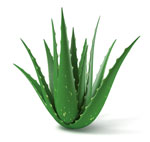 |
Aloe Vera was used in Ancient Greece where it was imported from the island of Socotra, having originated in Africa. It was introduced to the West Indies in the seventeenth century and is now grown in the United States. This plant has many therapeutic values and over the centuries, its effectiveness has been proven time and time again. Aloe Vera has moisturizing, anti-inflammatory, regenerative and healing effects. The aloe juice flows from the tender leaves of the plant while the Aloe Vera gel is extracted from the central area of the leaf. Aloe contains over 250 components including vitamins, minerals, amino acids and polysaccharide enzymes. It plays an important role in the cosmetic industry: Ivan Danhof, Professor of Physiology at the University of Texas showed that applying the gel to the skin accelerated the production of fibroblasts to a level 6 to 8 times faster than the normal rhythm of reproduction.
|
| ANP® 2+ |
|
ANP® 2+ is a patented lipid complex designed to stimulate the growth and renewal of skin appendages. Thanks to the combination of plant oils selected for their special features, ANP® 2+ is characterized by a distinctive composition of essential fatty acids, tocopherols, tocotrienols, and phytosterols, thus helping to boost cellular regeneration and micro circulation, and to regulate defense mechanisms and those of inflammation. The addition of THIO-LIPESTERS® to the lipid complex results in the optimization of skin appendage growth.
|
Arnica Montana
Family : Asteraceae |
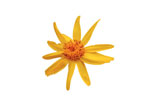 |
The Montana Arnica, more commonly known as "fall grass" grows in the mountains of Europe and North America. It can be found in the high meadows of the Vosges, the Alps, the Pyrenees and the Massif Central (where there is soil with crushed quartz). The flower extract MONTANA ARNICA is composed of lactone, helenalin, and flavonoids. It’s known for its anti-inflammatory and soothing anti-edematous properties. In herbal medicine, it is used as a topical treatment to treat bruises, swelling and joint pain.
|
Shea Butter
Butyrospermum Parkii
Family : Sapotaceae |
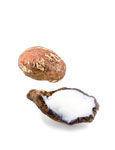 |
Shea butter comes from shea nuts. It consists of 16 saturated and unsaturated fatty acids in varying proportions depending on the country of origin. This large variety of unsaponifiable fatty acids gives it excellent moisturizing properties and helps maintain skin elasticity.
|
Centella Asiatica
Family : Apiaceae |
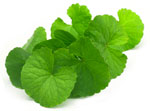 |
Centella Asiatica was described in Charaka Sambita, a medical text written around 700 BC. In Ayurvedic medicine it is called "tiger grass" because tigers roll in it to treat their injuries. This plant originated in South East Asia and has veno-tonic and anti-edematous properties. Centella extract contains asiaticoside, asiatic and madecassic acids and is also used in the treatment of dermatoses to help accelerate the healing of superficial wounds. It stimulates the production of collagen and fibroblasts and promotes healing.
|
| D- Panthenol |
|
D-Panthenol is a derivative of alcohol and helps repair the skin barrier and improve hydration. It induces the synthesis of a precursor of the essential fatty acids and sphingolipids to the lipid constitution of the skin. D-Panthenol has healing properties, stimulating cell growth and reducing the healing time of wounds.
|
Ginkgo-Biloba
Family : Ginkgoaceae |
 |
Ginkgo-Biloba Tree maidenhair is known for its remarkable longevity: up to 4000 years. It was the only surviving tree in Hiroshima after 1945. Its leaves contain flavonoids and ginkgolides are used in cosmetics for its stimulating properties of the skin’s microcirculation.
|
Glycyrrhiza Glabra Enoxolone
Family : Fabaceae |
 |
This root has been a sweet treat for the people of the Mediterranean for generations. Its scientific name, Glycyrrhiza, comes from the Greek glucus "sweet" and rhiza "root". This herb contains in its roots a powerful asset: glycyrrhizinic acid and its aglycone (glycyrrhetinic acid = enoxolone). These assets inhibit 5β reductase enzymes responsible for the metabolism of cortisol and aldosterone. Thus the elimination of corticosteroids is slowed and their half-life prolonged. Their induced increase stops the synthesis and release of cytokines involved in the inflammatory process. Its cortisone-like activity works as an anti-inflammatory agent and has calming and soothing properties.
|
| Glycerin |
|
Vegetable glycerin is obtained by coconut oil or rapeseed saponification. It has excellent moisturizing power through two mechanisms. It has a moisturizing effect due to its hygroscopic properties meaning its alcohol functions are capable of binding water molecules. The transepidermal water loss is thus reduced and slowed by the evaporation of water. It also has the ability to increase the fluidity of the lipid barrier thus promoting the fixation of water between the bilayers. Glycerin acts as a water sensor. It is one of the oldest used humidifiers. It softens and soothes the skin with its moisturizing properties.
|
Camelina Oil
Camelina Sativa Seed Oil
Family : Brassicaceae |
|
Camelina is a native herb to the Asian steppes. It was already being consumed by humans in 1500 BC. Camelina comes from the Greek "camai" which means earth and “lina” which means small linen. Camelina grows from flax. The fruits are harvested in late summer to extract the seeds to obtain the oil. The seeds contain 40% of highly polyunsaturated oil (40-60%). With linseed oil and purslane, camelina oil contains the highest percentage of alpha-linolenic acid (over 30%). It is very rich in omega 3. This fatty acid belongs to the essential fatty acids that cannot be manufactured by the body. Its emollient properties improve the flexibility and elasticity of the skin.
|
Camellia Oil
Camellia Oleifera
Family : Tea Tree |
 |
Camellia is a tree that grows in the mountains of Southeast Asia. Camellia oil has been used for over 1000 years by the Japanese in food as a seasoning but also for skin, hair and scalp. The Camellia fruit is a pod contains the seeds to produce Camellia oil. It contains more than 70% oleic acid (omega 9) and is rich in vitamin E.
|
Macadamia Oil
Macadamia Ternifolia Seed Oil Family : Proteaceae |
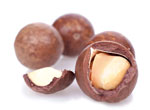 |
It is extracted from macadamia nuts, fruits eaten by Australian Aborigines for over 500 years. The tree is named after John Macadam, a scientist, philosopher and politician who lived in Australia from 1827 to 1865. This oil contains up to 28% of palmitoleic acid and 80% monounsaturated fatty acids which give it nourishing, emollient and moisturizing properties. Massaging macadamia oil is known to facilitate micro-circulation and tone the lymphatic system. The fatty acid composition of macadamia oil is very similar to human sebum, an essential element in hair fiber cladding. Its high percentage of monounsaturated fatty acids and low in polyunsaturated makes it relatively more stable to oxidation.
|
Oil Grapeseed
Vitis Vinifera Seed Oil
Family : Vitaceae |
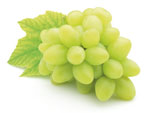 |
Grapeseed oil is native to Asia Minor. The grape itself contains these grains, and in each grain is 2-4 seeds. These seeds are crushed for oil. 2-4 seeds can produce 12 to 13% oil. It is rich in vitamins, minerals, omega-6 linoleic acid-up to 70%, and other fatty acids. It benefits from regenerating and restructuring properties. In cosmetics, grapeseed is particularly appreciated for the presence of polyphenols and tocopherols which are excellent antioxidants.
|
| Imperata Cylindrica Family : Poaceae |
 |
This subtropical plant more commonly known as "Japanese blood grass" is found in the sandy and saline areas of the Australian desert. Its roots are naturally rich in potassium and osmoprotectant: the dimethylsulfoniopropionate (DMSP) allows it to survive in extreme conditions of drought and excessive salinity. Potassium acts as a pump for the cell to capture the water and DMSP traps the water in the heart of the cell to maintain hydration whatever the conditions. This osmotic regulator is recognized for its exceptional moisturizing properties.
|
| Iparzine-4A® |
|
IPARZINE-4A® is an innovative and patented active ingredient which combines three elements: zinc, aspartic acid, and palmitic acid. This complex boosts the cellular regeneration of tissue and fights efficiently against the inflammatory processes, thus forming a specific solution to problems related to skin aging.
|
| Lipesters® C8SS 7030 & Lipesters® USS 7030 |
|
LIPESTERS® C8SS 7030 and LIPESTERS® USS 7030 respectively have antibacterial and fungicidal properties, which are obtained thanks to the targeted and well-known actions of caprylic and undecylenic chains. Their usage helps to effectively combat microbial development.
|
| Lipesters® PSS 4060 |
|
LIPESTERS® PSS 4060 are characterized by the presence of palmitic acid (a fatty acid naturally present in tissue) and a high proportion of a hydroxylated amino acid: L-serine, a moisturizing amino acid and precursor in the synthesis of ceramides. Due to their composition, LIPESTERS® PSS 4060 contribute to the protection and balance of the skin.
|
| Lipesters® |
|
An exclusive patented combination of silk amino acids, serine, and fatty acids, LIPESTERS® allow the formation of an exogenous supply of fat-soluble amino acids. According to their structure, they have restorative, moisturizing, antibacterial and antifungal properties, which help to restore the skin’s balance.
Four LIPESTERS®, all created from natural amino acids of silk fibroin (structural protein, the main component of silk), are available and allow us to achieve targeted actions depending on the treatment being sought
|
Butcher's Broom
Ruscus aculeatus
Family : Liliaceae |
 |
The butcher’s broom grows in calcareous soils and is very common in woods and hedges in the regions of the South, Central and West of France. It is traditionally used in the treatment of heavy legs because it contains steroidal saponins with which are known for for their vasoconstrictive, anti-inflammatory and anti-edematous properties.
|
| Thio-Lipesters® C8SMET 8515 |
|
THIO-LIPESTERS® C8SMET 8515 have a stimulating action that boosts hair regrowth in particular thanks to the introduction of L-methionine, a sulfur amino acid which contributes to the strengthening of nails and the prevention of hair loss.
|
Red Vitif Vinifera
Vitis Vinifera
Family : Vitaceae |
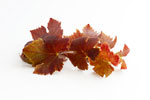 |
The red vine is a venous toxin. The harvested leaves contain anthocyanins and vitamin P which strengthens the resistance of the veins. It is widely used to relieve heavy legs. Its tannin makes it an astringent ingredient.
|